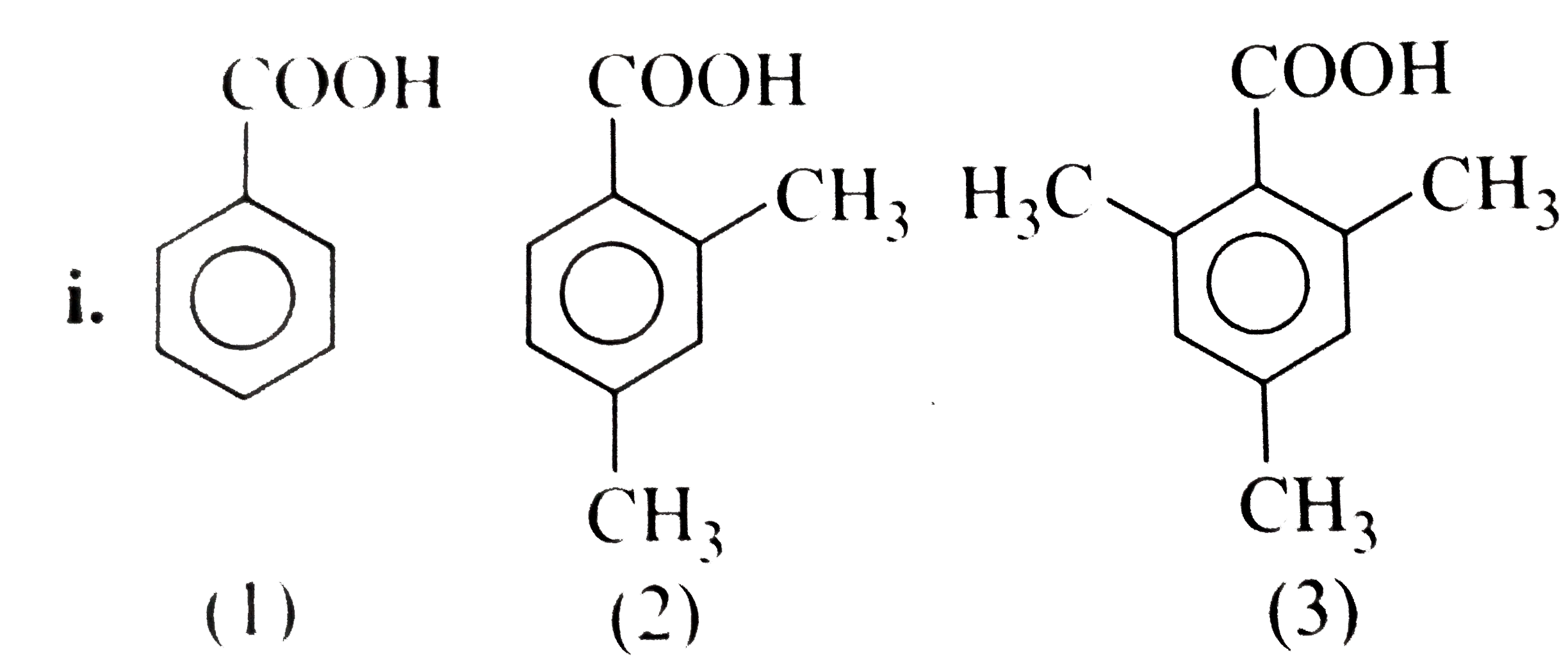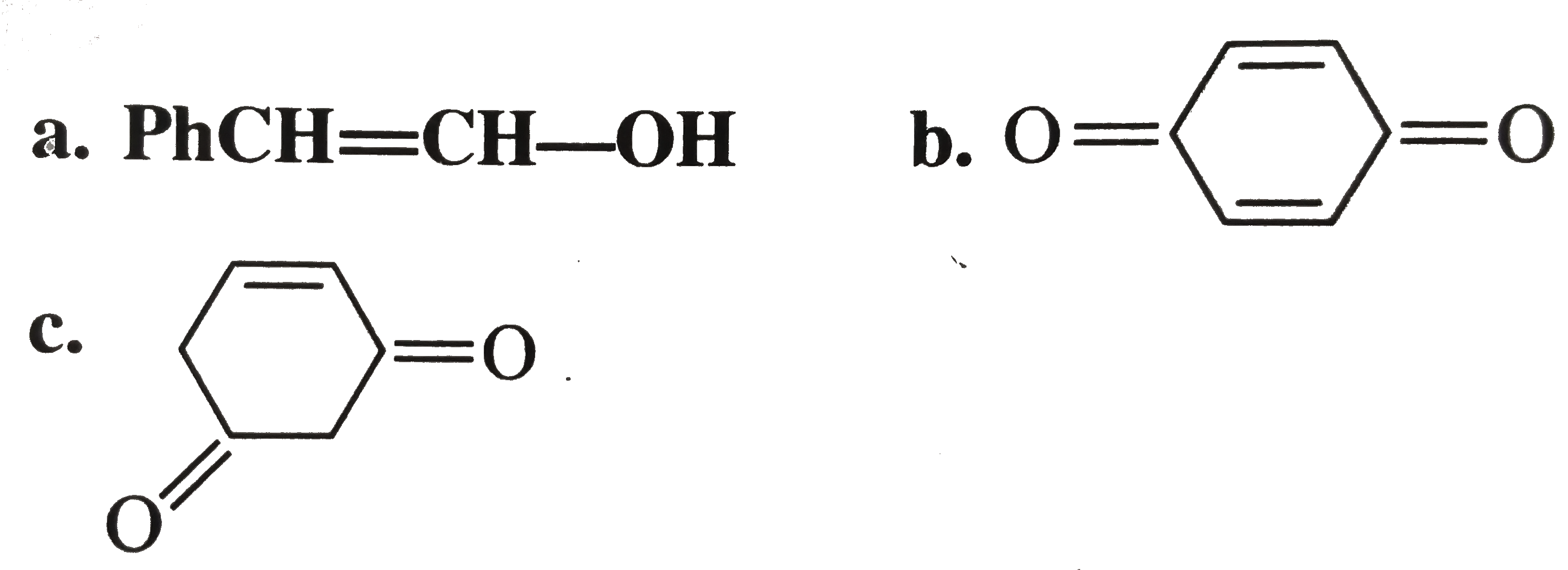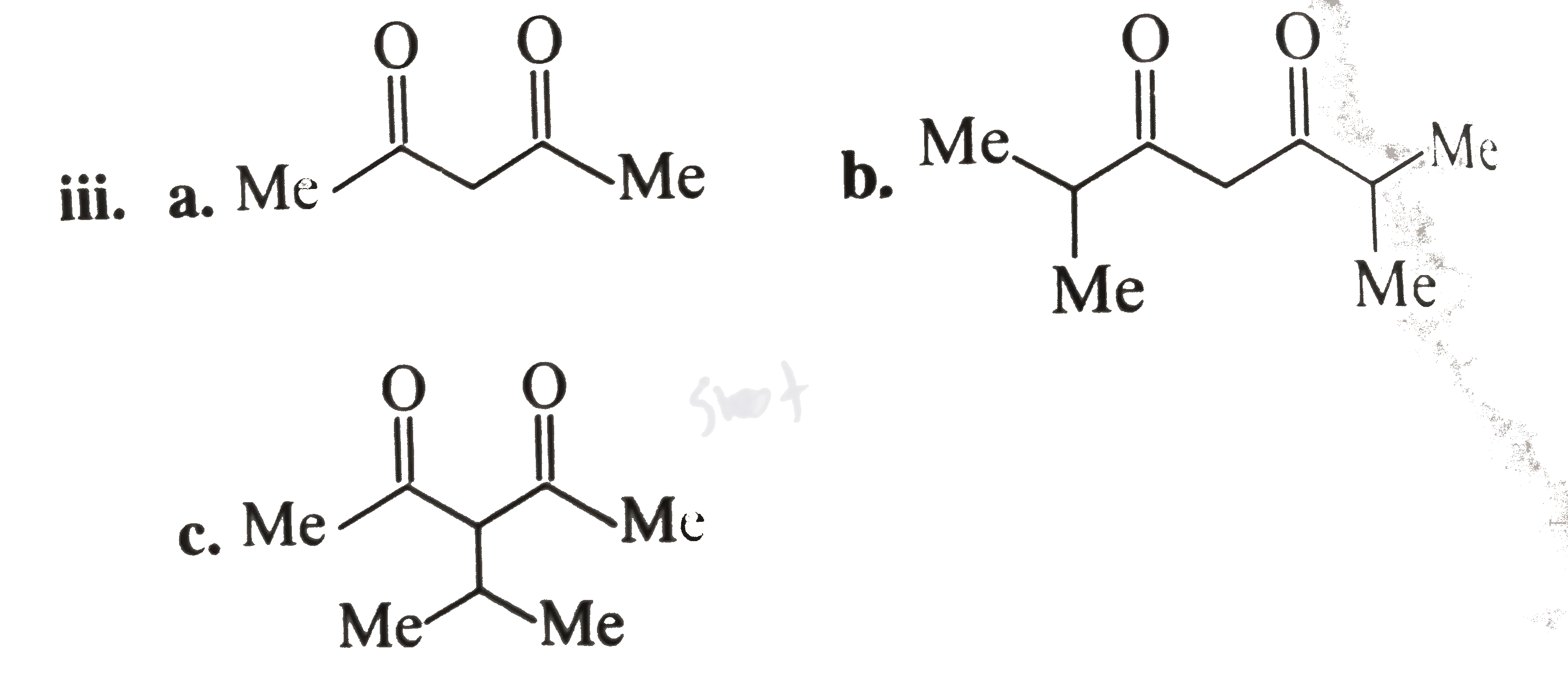Arrange the following compounds in decreasing orders of rate of hydration.
(X)CCl3CHO (Y)CH3CHO (Z)CH3COCH3 (W)CF3CHO
W gt Z gt X gt Y
W gt X gt Y gt Z
W gt Y gt Z gt X
W gt Z gt Y gt X
The correct Answer is:B
Step by step video, text & image solution for Arrange the following compounds in decreasing orders of rate of hydration. (X) C Cl_(3)CHO " " (Y) CH_(3)CHO " " (Z)CH_(3)COCH_(3) " " (W) CF_(3)CHO by Chemistry experts to help you in doubts & scoring excellent marks in Class 12 exams.
Topper's Solved these Questions
- BOOK - RESONANCECHAPTER - CARBONYL COMPOUNDS (ALDEHYDES & KETONES ) & CARBOXYLIC ACID EXERCISE - Exercise-2 Part-I1videos
CARBONYL COMPOUNDS (ALDEHYDES & KETONES ) & CARBOXYLIC ACID
- BOOK - RESONANCECHAPTER - CARBONYL COMPOUNDS (ALDEHYDES & KETONES ) & CARBOXYLIC ACID EXERCISE - Part-I97videos
CARBONYL COMPOUNDS (ALDEHYDES & KETONES ) & CARBOXYLIC ACID
- BOOK - RESONANCECHAPTER - CARBONYL COMPOUNDS (ALDEHYDES & KETONES ) & CARBOXYLIC ACID EXERCISE - Exercise-1 Part-II1videos
CARBONYL COMPOUNDS (ALDEHYDES & KETONES ) & CARBOXYLIC ACID
- BOOK - RESONANCECHAPTER - BIOMOLECULES & POLYMEREXERCISE - ORGANIC CHEMISTRY(Biomolecules & Polymer)33videos
BIOMOLECULES & POLYMER
- BOOK - RESONANCECHAPTER - CHEMICAL KINETICSEXERCISE - PHYSICAL CHEMITRY (CHEMICAL KNIETICS & RADIOACTIVITY)49videos
CHEMICAL KINETICS
Similar Questions
Knowledge Check
- Question 1 - Select One
Arrange the following compound in increasing order of reactivity towards nucleophilic addition reaction
(I) C6H5COCH3 (II) CH3CO−C2H5
C6H5CHO (IV) CI−CH2−CHOAIV > III > II > IBIV > II > III > ICI > II > III > IVDIII > IV > II > I
Arrange the following compounds in increasing order of their boiling points.
CH3CHO,CH3CH2OH,CH3OCH3,CH3CH2CH3View SolutionArrange the following compounds in increasing order of their boiling points.
CH3CHO,CH3CH2OH,CH3OCH3,CH3CH2CH3View Solutiona. Acid halides, anhydrides, esters and amides, all of them contain (C=O) group but none of them gives test for (C=O) group, i.e., they do not form oximes, hydrazones, and DNP derivatives, etc. Why?
b. Arrange the following in the decreasing order of nucleophilic addition.
i. (1)−CHO
(2)−COCH3
(3)−COOH
(4)−COCI
(5)−CONH2
(6)−COOCH3
(7)−COOΘ
ii. (1)CH3CHO
(2)CH3COCH3
(3)HCHO
(4)CH2H5CH2COCH3
iii. (1)CH3COCH3
(2)C6H5COCH3
(3)C6H5COC6H5
(4)C6H5CH2COCH3
iv. (1)C6H5CHO
(2)ρ−CH3.C6H4.CHO
(3)ρ−OH.C6H4.CHO
(4)ρ−NO2.C6H4.CHO
(5)ρ−CI.C6H4.CHO
v. (1)HCHO
(2)CH3CHO
(3)CH3COCH3
(4)CI3CCHO
c. Arrange the following in the increasing order of ease of hydrolysis.
(1)CCH3COOC2H5
(2)CH3COCI
(3)(CH3CO)2O
(4)CH3CONH2
d. Arrange the following in the increasing order of ease of acid-catalysed esterification of:
i.
ii. (1)CH3CH2COOH
(2)(CH3)2CHCOOH
(3)(CH3)3CCOOH
iii. (1)CH3CH2CH2OH
(2)CH3CHOHC2H5
(3)(CH3)2C(OH)C2H5
e. Arrange the following esters in decresing order of ease of alkaline hydrolysis.
i. (1)HCOOCH3
(2)CH3COOCH3
(3)(CH3)3CCOOCH3
(4)(CH3)2CHCOOCH3
ii. (1)CH3COOCH3
(2)CH3COOC(CH3)3
(3)CH3COOCH(CH3)2
(4)CH3COOCH2CH3
iii. (1)C6H5COOCH3
(2)ρ−CH3O−C6H4−CCOOCH3
(3)ρ−NO2−C6H4−COOCH3
(4)ρ−Cl−C6H4−COOCH3View SolutionArrange the following compounds in increasing order of their property as indicated:
(i) CH3COCH3,C6H5COCH3,CH3CHO
(ii) Cl−CH2−COOH,F−CH2−COOH,CH3−COOH (acidic character)View SolutionArrange the following compounds in the increasing order of their boiling points :
CH3CHO,CH2OH,CH3OCH3,CH3CH2CH3View SolutionKeto-enol tautomerism is observed in :
(i) a.PhCHO , b.PhCOCH3
c. PhCOPh , d. PhCOCH2COCH3

(II) Arrange the following in the decreasing order of enol content:
(i) a.CH3COCH2CHO , b. CH3COCH3
c. CH3CHO , d. CH3COCH2COCH3
(ii) a. CH2(COOEt)2 (Diethyl malonate)
b. CH3COCH2COOEt(EAA)
c. CH3COCH2COCH3
d. PhCOCH2COCH3

(III) Give the decreasing order of enol content of ethyl acetoacetate in the following solvents:
a. Water b. Methanol
c. Benzene d. AcetoneView SolutionArrange the following in the increasing order of their boiling points :
CH3CHO,CH3COOH,CH3CH2OHView Solution

